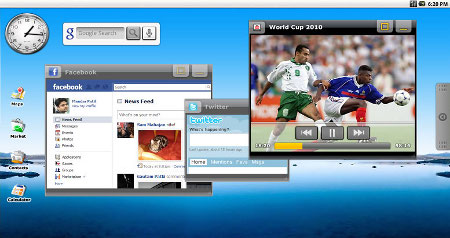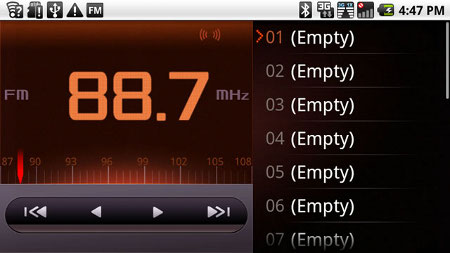Android dev modules target boot time, DLNA, and medical apps
Jan 6, 2012 — by Eric Brown — from the LinuxDevices Archive — viewsWind River announced three modular versions of its Android development platform. Wind River Solution Accelerators for Android are available in User Experience, Connectivity and Medical modules, offering features such as multi-windowing support, DLNA media sharing, multimedia and sync interfaces, firmware management, IEEE 11073-compliant medical data exchange, and 30 percent faster boot-times, claims the company.
Long before Intel began cozying up to Google and the Android community last fall, its Wind River software subsidiary had jumped into Android development with its Wind River Platform for Android. Based on its market leading embedded Linux development platform Wind River Linux, the Android suite was updated early last year with Honeycomb support, along with its companion test application, Wind River Framework for Automated Software Testing (FAST) for Android.

Multi-windowing support in User Experience Accelerator for Android module
(Click to enlarge)
Wind River Android Solution Accelerators can be used by OEMs and ODMs to quickly build Android-based applications before adding branding, personalization, and other distinguishing features, says the company.
Highlights for the three Wind River Solution Accelerators for Android modules are as follows:
- User Experience — The User Experience module offers some multimedia features, but is much more than just a UI stack. Components are said to include:
- Multi-windowing screen navigation — Aimed primarily at larger screens, including tablets and automotive displays, this feature supports multiple navigable and concurrently executing active windows on the screen. Users are not limited to automatic sizing, but can resize windows based on importance or immediate need, says the company.
- Media Center (DLNA) — The Media Center provides multimedia interoperability for Android-based devices, enabling access, viewing, and sharing of digital media based on the Digital Living Network Alliance (DLNA) standard. Components are said to include a digital media server, player, and controller.
- Boot time optimization — Accelerated boot time features can decrease boot time by as much as 30 percent, claims Wind River. These include a "Hyper boot" feature that enables devices to resume from RAM in less than one second and from Flash in eight seconds, claims the company.
- Firmware management system — This component provides online and offline update methods, and enables devices to recover from failures, and resist malicious attacks via unauthorized update packages.

Boot-time stats in User Experience module - Connectivity — The Connectivity module appears to offer the same DLNA media sharing components found in the User Experience module. In addition, it provides data synchronization functionality based on the SyncML protocol, as well as FM radio interfaces (pictured below).

FM radio interface in Connectivity module - Medical — This more vertically focused module is designed for medical device application development. The module supports the Continua Health Alliance's IEEE 11073 protocol, used to exchange data between personal health devices such as weight scales, blood pressure monitors, and blood oxygen monitors. The module also includes a Bluetooth Health Device Protocol implementation, as well as applications for medical sensor management and resulting data display, reporting, and communication.

Pulse oximeter app in Medical module
Stated Chris Buerger, senior director of product management and marketing for Android software at Wind River, "Wind River is taking its wealth of Android knowledge and providing a catalog of powerful Android solution accelerators that developers can immediately draw from and customize to their individual device development needs."
Availability
The Wind River Solution Accelerators for Android modules are now available at an undisclosed cost. More information may be found at Wind River's Android development site.
Wind River will demonstrating Wind River Solution Accelerators for Android at CES in Las Vegas next week at booth MP25057. More information on Wind River's CES activities may be found here.
This article was originally published on LinuxDevices.com and has been donated to the open source community by QuinStreet Inc. Please visit LinuxToday.com for up-to-date news and articles about Linux and open source.